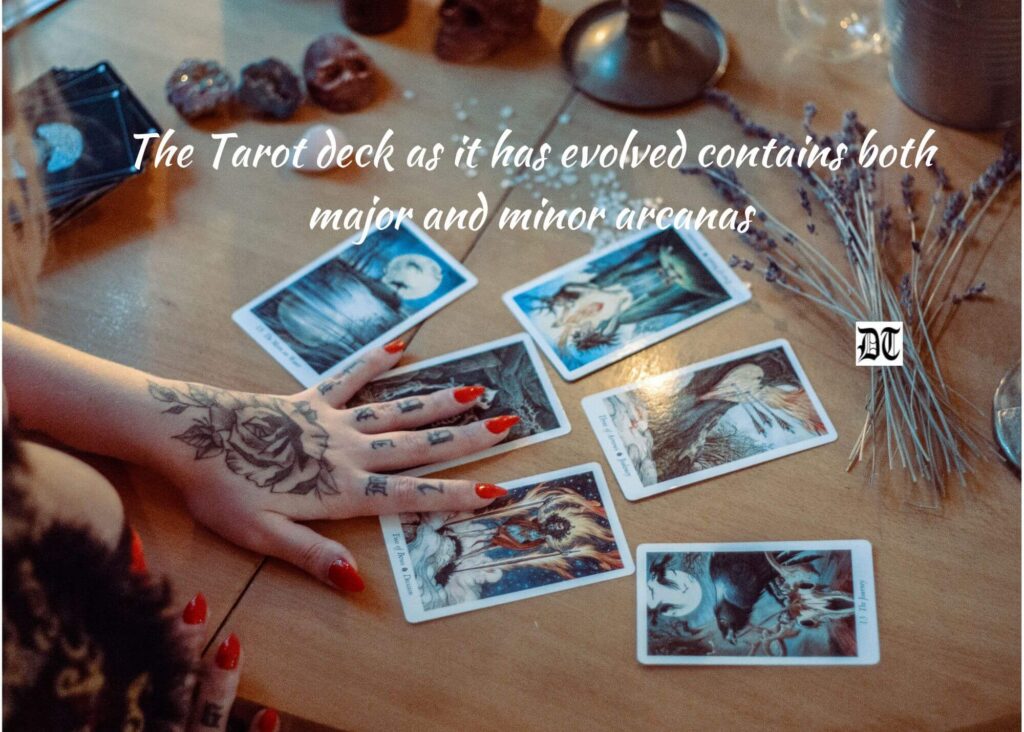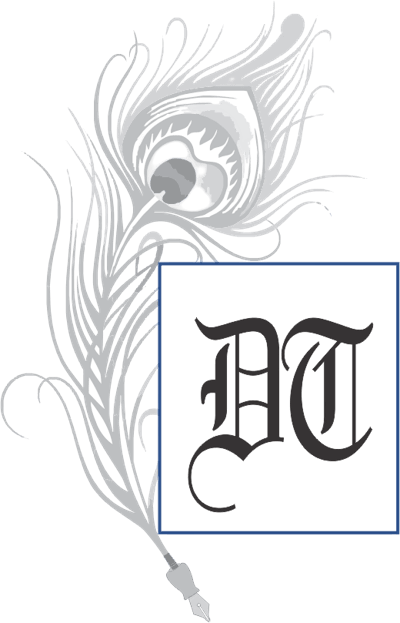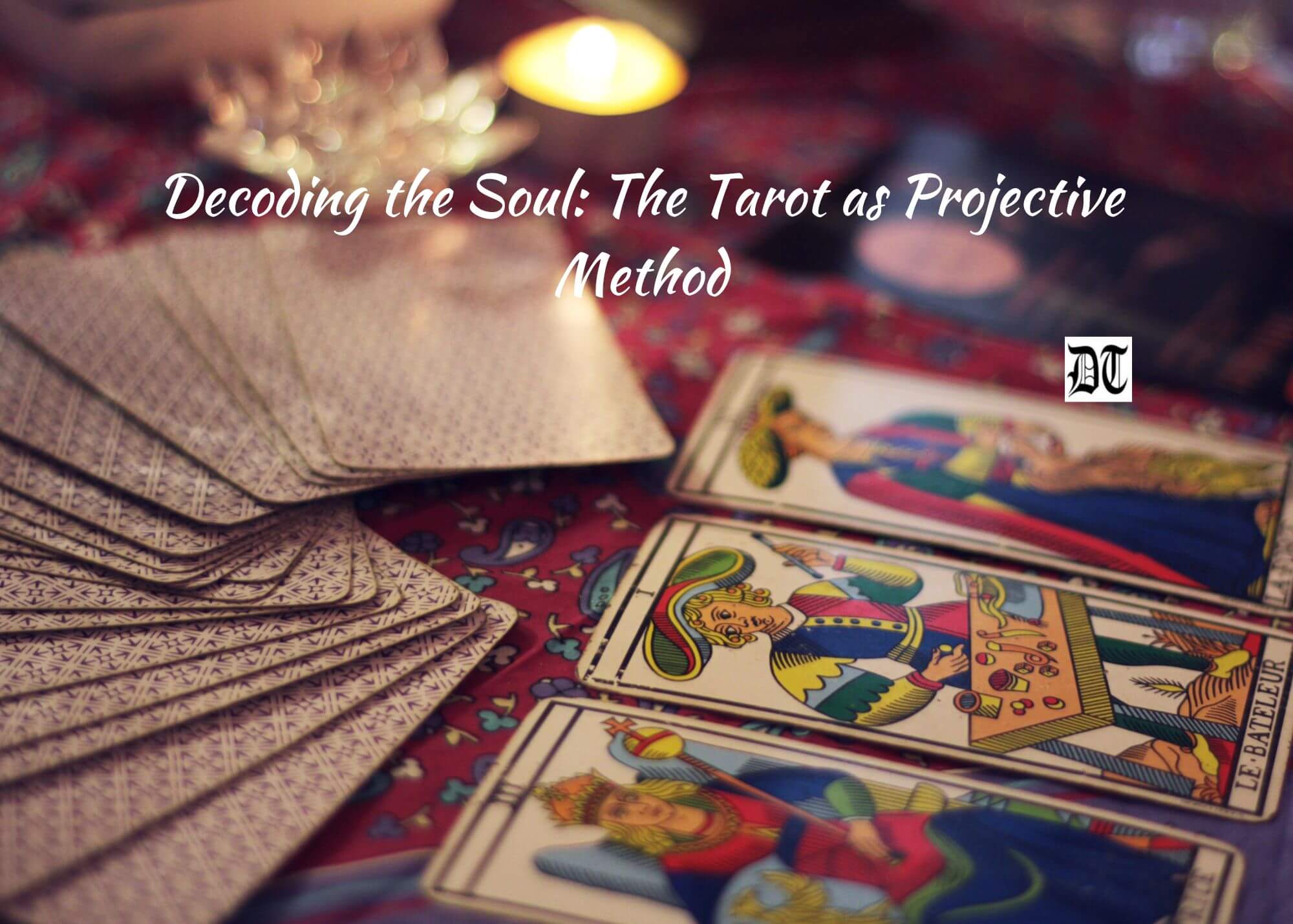Reading Time: 8 minutes
We wish to know the inner meanings of our lives. The power to facilitate both inner and outer understanding goes much farther back. A psychotherapist, Amidha, has seen that modern projective systems for psychological evaluation have their roots in the ancient systems of divination. Here’s an in-depth analysis on the Tarot.
So many of us are looking for ‘that which transpires behind that which appears’, as the Sufi teacher, Pir Vilayat Inayat Khan said so often during his recent sojourn on the planet. We have a deep longing to know that our lives have meaning. We come to earth in the angelic condition, and when the world begins to impress itself upon us, we begin to believe that what appears to us is reality. Yet somewhere along the line, we begin to see that things are not quite so concrete, and that there are myriad layers of meaning, both within and without the human psyche, in the larger world of events and places. The psychologists of the ages — the mystics, shamans, priests and physicians, those who study the soul — have sensed this and studied the nature of reality in order that humankind might broaden and deepen its perspective on life; and the way life expresses itself, vast and varied as it is, seems to show itself in an almost universal set of images, symbols, sounds and colors that appear and reappear throughout history in the art, literature and music that express what is taking place in the individual psyche and in the collective evolution of the planet.
These universal symbols, which can be seen in various forms over and over, throughout the history of art and religion, lost much of their importance in the modern era, when the planetary consciousness shifted its focus from religion to science. However, heralding the post-modern era was the thinking of the ‘depth’ theorists such as Freud, Jung, and Adler, who pointed out their universality and the ways in which the psyche utilises them in its search for meaning. Yet their power to facilitate both inner and outer understanding goes much farther back, and in my work as a psychotherapist, I have seen that modern projective systems for psychological evaluation, such as Rorschach inkblots and similar instruments such as the Thematic Apperception Test (both sets of images that act to access unconscious feelings and beliefs), actually have their roots in the ancient systems of divination, which helped persons to deepen their understanding of themselves and the world. These include the Tarot, the iChing, runes, and those ‘fortune-telling’ systems with which many of us are familiar. Rather than predicting events, however, they help us to a greater understanding of what is taking place at a deeper and vaster level within the containment of the individual and collective consciousness of the world. C.G. Jung remarked that the fate of the planet is directly connected to the willingness of the individual to confront her or his own shadow self. If we resist our own ‘shadow’, Jung’s term for that part of ourselves we don’t want anyone to see, it will take over our consciousness and wreak havoc in our personal and collective lives.
Tarot is a good example of the archaic ways humankind has sought understanding.
Tarot is a good example of the archaic ways humankind has sought understanding. It actually goes back to the first half of the fifteenth century. It probably originated in Northern Italy, as a card game called Triumphs, which came to be adopted for divination by secret societies such as the Hermetic Order of the Golden Dawn and other spiritual and occult groups (Whitmont). The decks that are published today show the influences of many of these esoteric systems, containing astrological symbols, alchemical and religious imagery, numerological references, and, in terms of the often beautiful art with which the cards are created, all these have a deeply psychological effect on their viewers. I believe that the Tarot represents one of the earliest of the ‘projective methods’ used in psychological analysis and is in itself still profoundly useful in bringing forth the contents of the unconscious.

I have discovered, in my therapeutic work that the images and symbols of the Tarot are a profoundly meaningful way to help people to observe their interior worlds as they are reflected in what seems to be happening in their outer lives. Many people struggle with repressed unconscious material that is too painful or threatening to access directly and the Tarot can provide a way not only to get in touch with what is taking place at a deep level, but also to understand what it means in terms of one’s evolution toward wholeness. This kind of thinking, of course, is more resonant with the humanistic and transpersonal theories of psychology, which have been my focus of study and I find that ultimately, no matter why people think they come to therapy, what they want most is to make meaning of the events of their lives, both good and bad. It is a process of soul-making, and the Tarot is a very direct and efficient way of projecting the inner contents of the psyche outward for conscious examination. For those of us who have been engaged in spiritual practice, this is not a new concept, and it is interesting to me that modern, empirical science, with its “if it can’t be seen and measured, it doesn’t exist” philosophy, has actually made some attempt to utilize these age-old techniques in ways it considers appropriately rigorous for its purposes. The earlier depth psychologists saw dreams as ‘proof’ of the unconscious. The images of the Tarot evoke similar insights. Here is some background to these concepts, and some examples:
… when the cards are shuffled and spread, the basic idea is that the unconscious…
The Tarot deck as it has evolved contains both major and minor arcanas (mysteries, or secrets). The major arcana contains the images that seem almost universally to represent the archetypes related to the stages of spiritual unfoldment that the person goes through on the path to wholeness, while the minor arcana provides more detail and, through its own imagery, which includes elements of numerology, alchemy and classical myth, helps us to focus on what the individual is experiencing. The division of the minor arcana into staves (representing business or commerce, etc.), coins (representing material concerns and money, obviously), cups (representing matters of the heart and emotions) and swords (representing conflict) provide a projective framework for even closer delineation of what the unconscious is working on. Thus, when the cards are shuffled and spread, the basic idea is that the unconscious projects its contents in the patterns and positions in which the cards fall. Reinforcing the impact of these images are the colors, shapes and symbols with which the cards are illustrated, and the layout used for each reading also points to its meaning. For example, the traditional layout called ‘Celtic Cross’ depicts the esoteric meaning of the cross, the meeting of heaven and earth in the eternal predicament of the human condition. However, meaning is always an individual thing, and because of the universality of the symbolic content of the Tarot, each of us will place a personal interpretation of what is seen when the cards are laid out.
A young mother came to see me once, in quite a bit of pain over her inability to express her feelings for her son openly. Much of this she attributed to her frustration with his constant, high level of activity, his unwillingness to go to sleep at night, and his occasional destructiveness. Of course, when we began to speak, she did not quite understand what her problem was. She only knew they were at odds, and that his boisterous personality conflicted with her need for some quiet and solitude in the course of the day. When we laid out the cards, she saw, first, that the figure of the Empress, who is often seen as the ‘earth mother’ archetype — expressing the outflow of love and emotion in an often demonstrative and extroverted way — was ‘crossed’ with the High Priestess, who puts one in touch with the part of the personality that has a silent, interior life, and can often come across as rather shy and withdrawn. Both of these archetypes represent a capacity for great love, but one is more able to make plain her feelings, while the other may come across as rather cool and, sometimes, even stern. This mother was beginning to see how these two aspects of her personality were contributing to her frustration!
Underneath these figures in the reading, in the ‘foundation’ position, was the card depicting the Knight of Wands, often drawn on a prancing horse, illustrating movement and action. It seemed to us that this one was her son! The other cards in the reading showed various influences around the mother-child dyad, and we talked at length about both the Empress and the High Priestess, discussing their mythical meanings, and how these could help her understand herself in terms of her life and her relationships. She was able to ‘dialogue’ with each of these archetypes, asking them what they meant to her, what they wanted, how she could serve and honor both within, and we strategized ways for her to find a balance between her needs and those of her very active child. But there was more: gradually, over several sessions, we were able to deepen our understanding of the various personality and life influences she was working with, including the influences of her family-of-origin, as the cards moved around the various positions each time we laid them out, and as other influences and figures introduced themselves. Obviously, this kind of psychotherapy is very different from the current time-limited behavioral therapies that focus on changing behaviors without concerning itself with understanding. These have their places, but I find that a depth approach such as this leads to a more satisfying and permanent transformation ultimately, because it allows the person to see what is happening on a ‘higher’ level, not just in terms of mundane difficulties. This mother came into therapy angry with herself for what she believed were her failings, and left with a greater vision of the depth of her being, and a sense of the real meaning and beauty of her life. As she was able to ‘see’ herself in this way, she relaxed more into her relationship with her child, able to realise that each needed the other for balance: she saw that her child needed the steadying effect of her quiet strength, and she realised that he was teaching her to have fun!
his not only provided a huge amount of material for us to talk about, ,,,
Another way the cards have a therapeutic effect is in the direct impact their images have on the psyche: one man saw himself in the Two of Swords card, depicting a female and a male figure with crossed swords, and what might be seen as a young boy between them, covering his ears to their evident conflict and showing great distress. Without really thinking about the various and more complicated meanings often attributed to this card, he immediately and painfully recalled his own lifelong conflict between a very controlling mother and the man he wanted to see himself as. This not only provided a huge amount of material for us to talk about, it put him in immediate and direct touch with a residue of pain connected to the death of his father he had been caring for most of his life. In this way, the cards can have a cathartic effect, releasing trauma that floats and stagnates below the surface of the psyche, without much discussion at all. We all illustrate this kind of thing for ourselves often, when we ‘see’ ourselves very directly in a figure in a film or play, or in a profoundly rendered illustration. The mandala, the ancient, circular illustration of consciousness that has resurfaced as a therapeutic metaphor in our time, is an excellent illustration of this potential for direct apprehension of who we are in a given situation, or even eternally. While all this material may arise in the therapeutic involvement eventually, Tarot is a very efficient and direct way to open the dialogue. In depth psychotherapy, we seek not only to solve our problems: we want to know ‘what is my face before my parents were born’, as the ancient Zen koan so elegantly states it. We want to paint a picture for ourselves of the beautiful work of art our lives ultimately are. The Tarot lets us see both our eternal face and the process that we are: continuity in time.
The soul has no beginning and it has no end. It has always been and it will always be. Sin cannot touch it, nor virtue exalt it, and all else is its cover, as the lamp over the light. ~ Inayat Khan
We are looking for wholeness. As we identify the various inner figures expressing themselves outwardly, we have the opportunity to make friends with them, to dialogue with them, to find out how they can be useful to us. They become subjects for meditation; we call on them in various life situations as we need them, and they serve to remind us not so much of who we would like to be but of who we have always been.
References
Whitmont, Edward C. (1969). The symbolic quest: Basic concepts of Analytical Psychology. New Jersey: Princeton University Press.
Khan, Inayat. (1978). The complete Sayings of Hazrat Inayat Khan. New York: Sufi Order Publications.

Picture design Anumita Roy

















Fascinating and chock full of food for thought about how ancient archetypes live within us all, ready to help and shed light on our true selves.
Thanks, Joyce, you touch on exactly what I have come to feel about the archetypes increasingly, and what Jung said so often: they have their own lives and their own dynamic reality, and they emerge from the psyche when needed.